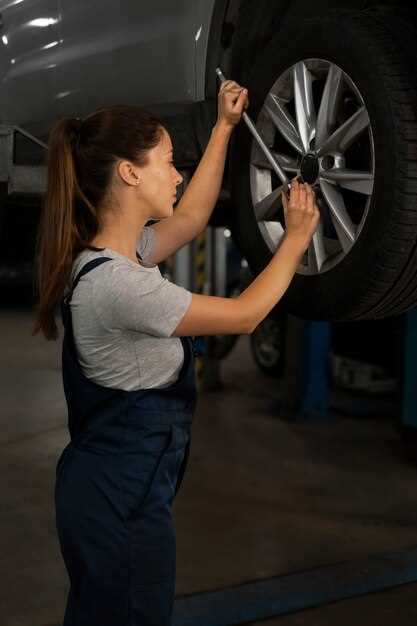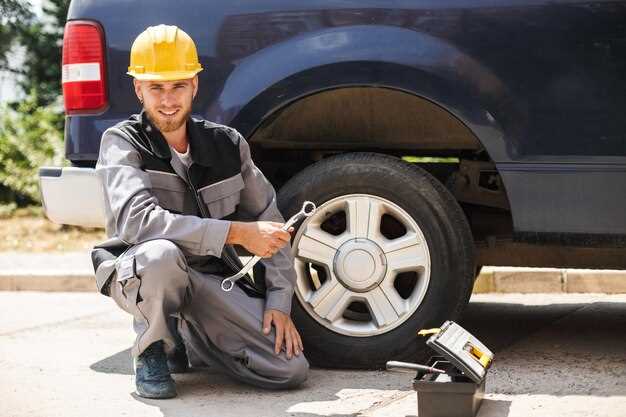
Maintaining your vehicle’s tires is crucial for ensuring optimal performance and safety on the road. Tires are the only point of contact between your vehicle and the pavement, making their condition vital to your overall driving experience. Regular maintenance not only enhances your safety but also extends the lifespan of your tires, saving you money in the long run.
Neglecting basic tire care can lead to premature wear and tear, resulting in costly replacements and potential hazards while driving. Simple practices, such as checking tire pressure, rotating tires regularly, and monitoring tread depth, can significantly improve the durability and efficiency of your tires. By implementing these straightforward maintenance tips, you can ensure that your tires perform at their best throughout their lifespan.
Moreover, understanding the factors that contribute to tire wear, such as alignment issues and driving habits, empowers you to make informed decisions. This article delves into practical maintenance strategies that can help you maximize your tire lifespan, promoting safer journeys and a smoother ride.
Check Your Tire Pressure Regularly
Maintaining the correct tire pressure is crucial for the longevity of your tires and overall vehicle performance. Regular checks can prevent uneven wear, improve fuel efficiency, and enhance safety on the road.
Here are key reasons to check your tire pressure regularly:
- Improved Tire Lifespan: Proper inflation minimizes tread wear, extending the life of your tires.
- Enhanced Fuel Efficiency: Under-inflated tires can increase rolling resistance, leading to higher fuel consumption.
- Safety First: Correct pressure ensures optimal vehicle handling, reducing the risk of blowouts and accidents.
- Environmentally Friendly: Better tire performance leads to lower emissions, contributing to a cleaner environment.
To effectively check your tire pressure, follow these steps:
- Consult your vehicle’s manual or the sticker found on the driver’s door jamb for the recommended pressure.
- Use an accurate tire pressure gauge. Remove the valve cap from your tire and press the gauge onto the valve stem.
- Read the pressure on the gauge. If it’s below the recommended level, add air until it reaches the correct pressure.
- Check the pressure when tires are cold, preferably in the morning before driving.
- Repeat this process for all tires, including the spare tire.
In addition to regular checks, monitor tire pressure changes with seasonal temperature shifts, as colder weather can lower tire pressure. Make it a habit to check your tire pressure at least once a month to ensure optimal performance and safety.
Rotate Your Tires for Even Wear
Regular tire rotation is a critical maintenance step that contributes to the longevity of your tires. Tires wear differently based on their position on the vehicle and the weight distribution. By rotating your tires, you promote even wear across all four tires, extending their lifespan and enhancing overall performance.
Why Rotate Tires? Front tires typically experience more wear than rear tires due to steering and braking forces. This difference can lead to uneven tread depth, affecting traction and handling. Rotating your tires at regular intervals helps balance this wear, ensuring all tires maintain optimal performance and grip.
When to Rotate Tires: It is generally recommended to rotate your tires every 5,000 to 8,000 miles, though you should always consult your vehicle’s owner manual for specific guidelines. Additionally, if you notice uneven wear patterns, it may be necessary to rotate the tires sooner.
How to Rotate Tires: The most common rotation patterns are the forward cross and the rearward cross. For front-wheel-drive vehicles, the forward cross pattern is typically recommended. This involves moving the front tires to the rear on the same side and swapping the rear tires diagonally to the front. For rear-wheel-drive vehicles, the rearward cross pattern is often used, where the rear tires move to the front on the same side, and the front tires swap to the rear diagonally.
Additional Tips: When rotating tires, it is an opportune time to check tire pressure and inspect each tire for damage or excessive wear. Maintaining proper inflation and ensuring tires are in good condition are essential for safe driving. Following this routine can help you maximize your tire lifespan and ensure a smooth ride.
Inspect Tread Depth and Wear Patterns

Regular inspection of tire tread depth and wear patterns is essential for ensuring optimal performance and safety on the road. Tread depth affects traction, handling, and overall tire lifespan. The legal minimum tread depth in many regions is 2/32 of an inch; however, it is recommended to replace tires once they reach 4/32 of an inch for better performance in wet conditions.
To assess tread depth, you can utilize the penny test. Insert a penny into the tread groove with Lincoln’s head facing down. If you can see the top of Lincoln’s head, it’s time to replace your tires. Additionally, specialized tread depth gauges are available for a more accurate measurement.
Alongside measuring depth, it’s vital to examine wear patterns. Uneven wear can indicate issues such as improper alignment, misbalanced tires, or incorrect inflation pressure. Below is a table summarizing common wear patterns and their potential causes:
| Wear Pattern | Description | Possible Causes |
|---|---|---|
| Center Wear | Tread wears more in the center than on the edges. | Over-inflation or excessive speed. |
| Edge Wear | Outer edges of the tread are more worn than the center. | Under-inflation or incorrect camber angle. |
| Cup Wear | Notable dips in the tread across its width. | Worn suspension components or unbalanced tires. |
| Patch Wear | A localized area of wear within the tread. | Alignment issues or tire imbalance. |
Identifying these wear patterns early can prevent further damage and enhance tire lifespan. Regular checks should be performed every month and before long trips. Maintaining proper inflation and ensuring wheel alignment will also contribute to even tread wear, extending tire life and improving safety on the road.
Avoid Overloading Your Vehicle
One of the most effective ways to extend the lifespan of your tires is to avoid overloading your vehicle. Each vehicle has a specific weight limit, often referred to as the Gross Vehicle Weight Rating (GVWR). This rating includes the weight of the vehicle itself, passengers, cargo, and any accessories. Exceeding this limit can lead to excessive tire wear and compromise performance.
Overloading can cause several issues:
- Increased Heat Generation: Extra weight leads to increased friction between the tires and the road, causing them to heat up more quickly. This can result in faster degradation of the rubber compound.
- Uneven Wear: Overloaded tires tend to wear unevenly, especially on the edges, which can lead to a shorter lifespan and increased risk of blowouts.
- Compromised Handling: A vehicle that is overloaded will not handle as well during turns or braking, which can lead to accidents.
To prevent overloading, refer to your owner’s manual for the manufacturer’s weight specifications. It’s advisable to regularly check the load and adjust accordingly, especially before long trips or when carrying heavy cargo. Keeping your vehicle within the recommended weight limits not only helps in enhancing tire longevity, but also ensures a safer driving experience.
Keep Tires Clean and Free from Debris
Maintaining clean tires is crucial for their longevity and performance. Accumulation of dirt, mud, and debris can lead to various issues, including poor traction and uneven wear. Here are some essential tips for keeping your tires clean:
- Regular Inspection: Frequently check your tires for any trapped debris, such as stones or gravel. Removing these items can prevent damage to the tire’s surface and enhance performance.
- Proper Washing: When washing your vehicle, pay special attention to your tires. Use a dedicated tire cleaner or a mild soap solution and a soft brush to remove dirt and grime.
- Avoid Harsh Chemicals: Steer clear of strong chemicals, such as bleach or acid-based cleaners. These can degrade the rubber and reduce the tire’s lifespan.
- Don’t Neglect the Wheel Wells: Clean the wheel wells and the areas around the tires. Dirt buildup in these areas can lead to corrosion and affect overall vehicle performance.
- Check After Off-Roading: If you’ve been driving on rough terrain, inspect your tires thoroughly. Off-road conditions can introduce additional debris and impurities that need to be cleaned out.
Keeping your tires clean not only improves their lifespan but also ensures better safety and performance on the road. Make tire cleaning a regular part of your vehicle maintenance routine.
Store Seasonal Tires Properly
Proper storage of seasonal tires is essential to prolonging their lifespan and maintaining optimal performance. Follow these guidelines to ensure your tires remain in excellent condition during the off-season.
Clean Tires Thoroughly: Before storing your tires, clean them to remove dirt, grime, and brake dust. Use a mild soap and water solution, avoiding harsh chemicals that could degrade the rubber. Ensure all soap is rinsed off, and allow them to dry completely.
Inspect for Damage: Check your tires for any visible damage, such as cracks, bulges, or punctures. Address any issues before storage, as this will prevent further deterioration over time. If necessary, consult a professional for repairs.
Store in a Cool, Dry Place: Choose a storage area that is cool and dry, away from direct sunlight and extreme temperature fluctuations. Excessive heat, humidity, and UV light can accelerate tire degradation.
Avoid Contact with Chemicals: Store tires away from sources of ozone and chemicals such as solvents, fuels, and oils. These substances can weaken the rubber, leading to premature wear or failure.
Use Proper Stacking Techniques: If you are storing tires that are not mounted on rims, stack them vertically rather than horizontally. This prevents them from developing flat spots. If they are mounted, storing them upright is recommended.
Consider Tire Covers: Utilizing tire covers can provide additional protection from dust and UV rays. These covers help to shield your tires from environmental factors that could cause degradation.
Document Tire Position: If you switch your tires seasonally, keep a record of their position on your vehicle. This helps maintain even wear and allows you to rotate them accordingly when they are re-mounted.
Following these simple storage practices not only maximizes the lifespan of your seasonal tires but also enhances safety and performance when you return them to your vehicle.














